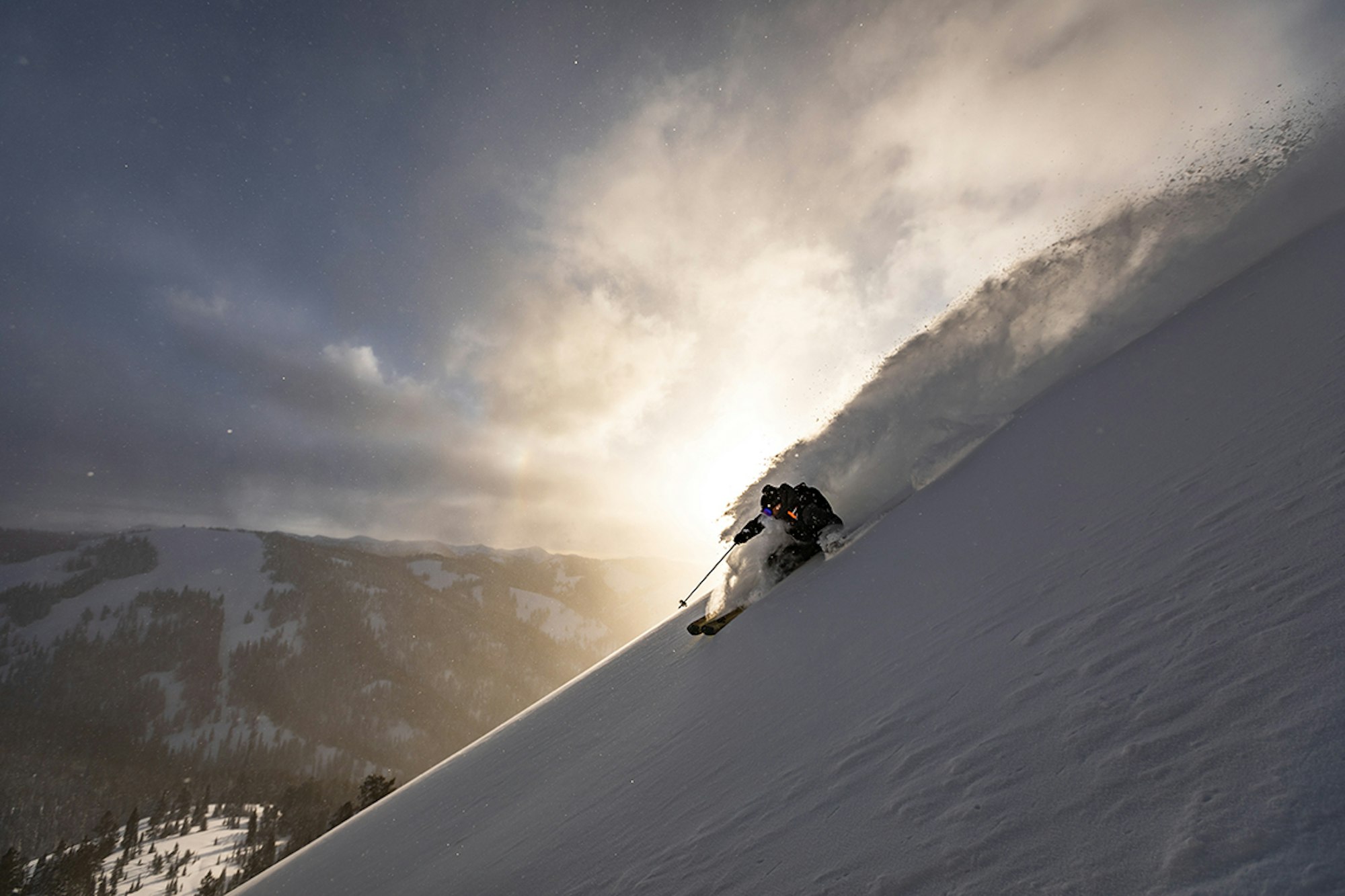WORDS • ERME CATINO | PHOTOS • CARSON MEYER
Header image: Skier • Dan Gish | Location • Teton Pass, WY
It’s June, and stacks of tiny laminated ski cores are neatly piled outside the Checkerspot Design Lab, in Salt Lake City, Utah. They’re labeled, marking the specific wood species and composites—all of which comprise a ski and happen to be material prototypes. Matt Sterbenz, the independent ski brand pioneer, and formerly of 4FRNT Skis, points along the wall. “See that machine? It’s a ski profiler… There are only three in the world. It measures the flex profiles of any ski.” My eyes light up, as do his, highlighting his new vision of ski production. For the past year, Sterbenz has been the General Manager for Wintersports of Checkerspot—a biotech company based out of Berkeley, California. The task at hand: re-imagine the construction of skis using a new material derived from algae oil. I take a quick tour before grabbing a final prototype of The Intention 110 – the first ski debuting from WNDR Alpine, Checkerspot’s new consumer brand. We set out to ski some laps at Snowbird… on skis made of algae… in June, mind you.
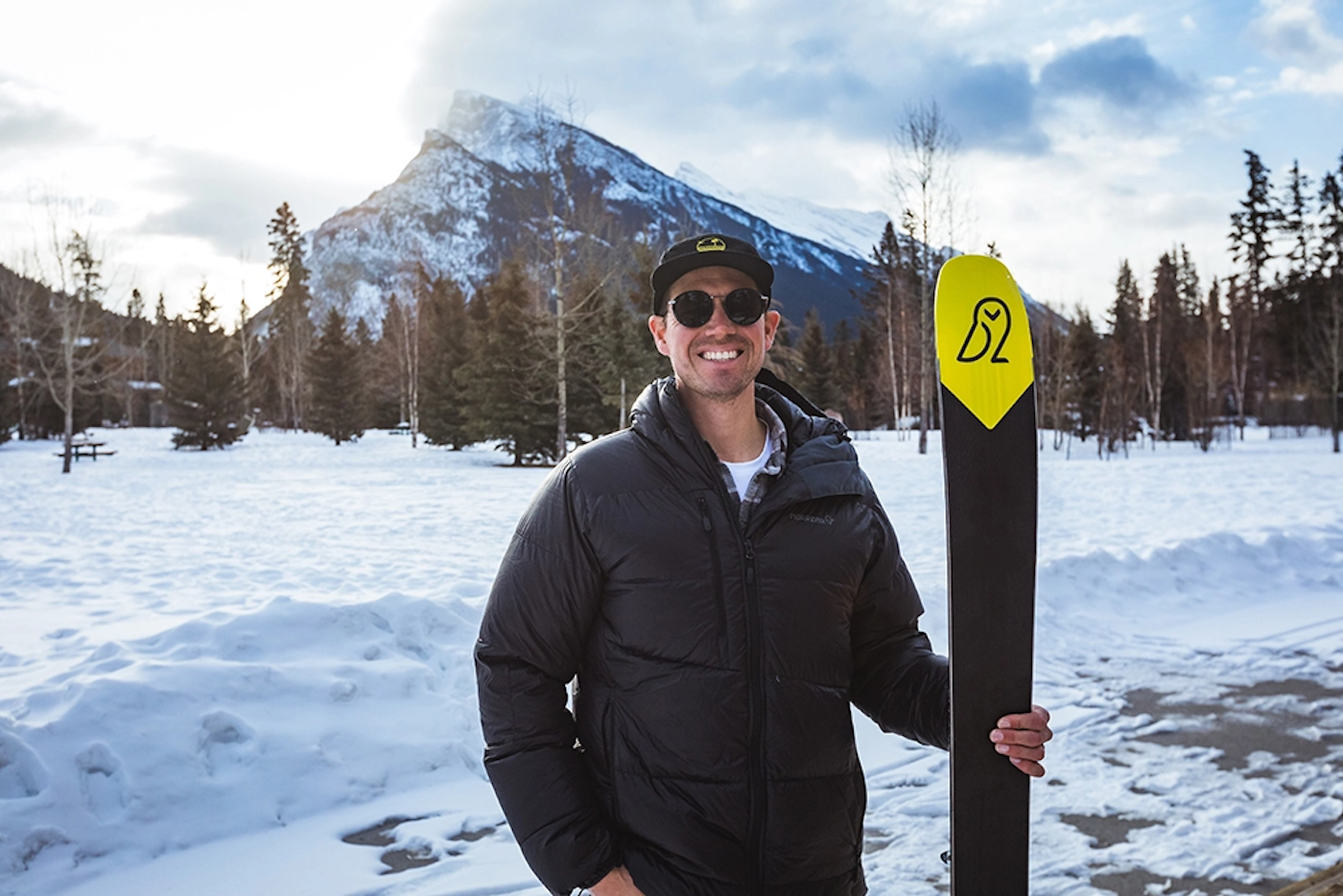
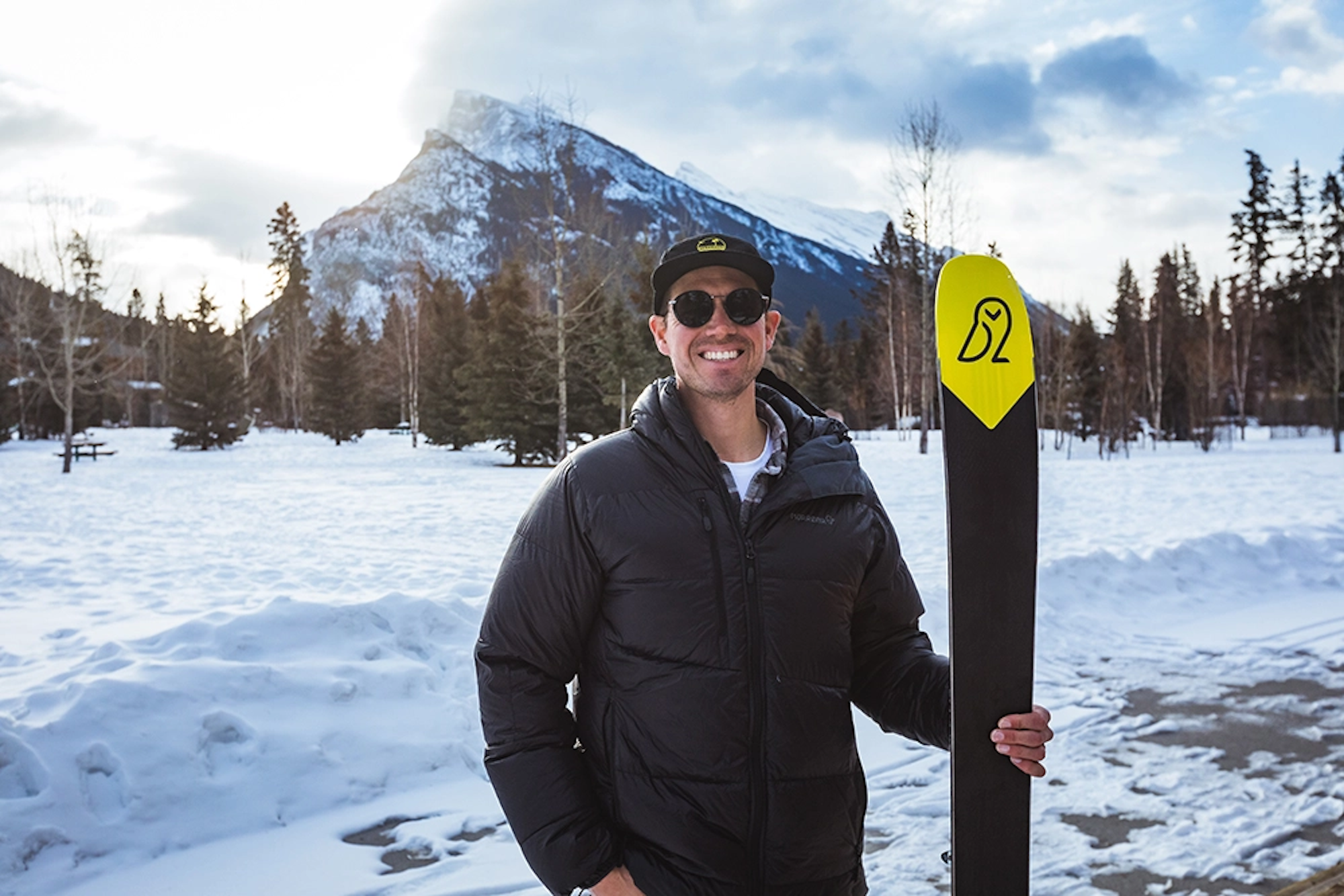
Sterbenz with The Intention 110 prototype in Banff, Alberta, Canada.
“For years we’ve been using geometry as a technology in the ski industry,” says Sterbenz. “With all due respect it has made a significant impact on the [ski] experience, but it’s not true innovation in terms of technology. It’s just taking different inspirations from different radial geometries that exist in board sports and applying it to skis.” Sterbenz points to that geometry evolution in how he built 4FRNT, by incorporating athletes who wanted to have a voice and used it through their perspectives on ski shape design.
The incorporation of athletes allowed 4FRNT to create skis that worked to their style of skiing and gave them the opportunity to brand themselves. “I think that was something really cool and pioneering at the time in skiing,” notes Sterbenz. “We really had a good time shaping skis, and giving the athletes the opportunity to be involved in that design process has proven to be critical in advancing ski design and technique… I would never want to take that away from the process ever. But everything until now has been two-dimensionally focused—looking at the shape geometries and the rocker/camber profiles.”
The third dimension missing has been materials. Look across any ski wall at your local shop, or online, and you’ll notice most skis today are essentially made out of the same things. This opportunity for innovation is what Checkerspot CEO Charles Dimmler and Sterbenz saw. It was a way to stand apart from other ski makers and look at ski production from a materials design point of view and in this case a sustainable one.
“What were the contents of this material before it became a fixed material? What are the contents of the material that we’re looking to replace it [with]?” These are just some of the questions Sterbenz, along with Daniel Malmrose, an engineer from the snowboard industry, began asking—together they have a combined 40 years of experience in manufacturing skis and snowboards. The duo began testing materials in isolated ways, using instruments that tested strength, vibration, etc., using tools Sterbenz never had access to in his days at 4FRNT. Prior to this venture, Sterbenz, like many independent ski builders of his time, just inherited materials that were commonly used in skis.
“We started to dissect everything that goes into a ski, really nitpicking how it all looks. It became astoundingly clear to us at the time how narrow the supply chain is. There just isn’t nearly as diverse a supply chain as there are brands available to consumers.”
Scrutinizing the current build of skis is how the duo ended up with so many two-inch by five-inch material samples. “Working with those super small coupons, identifying formulations of composites alongside a dozen different types of wood species was a really entertaining exercise,” says Sterbenz.
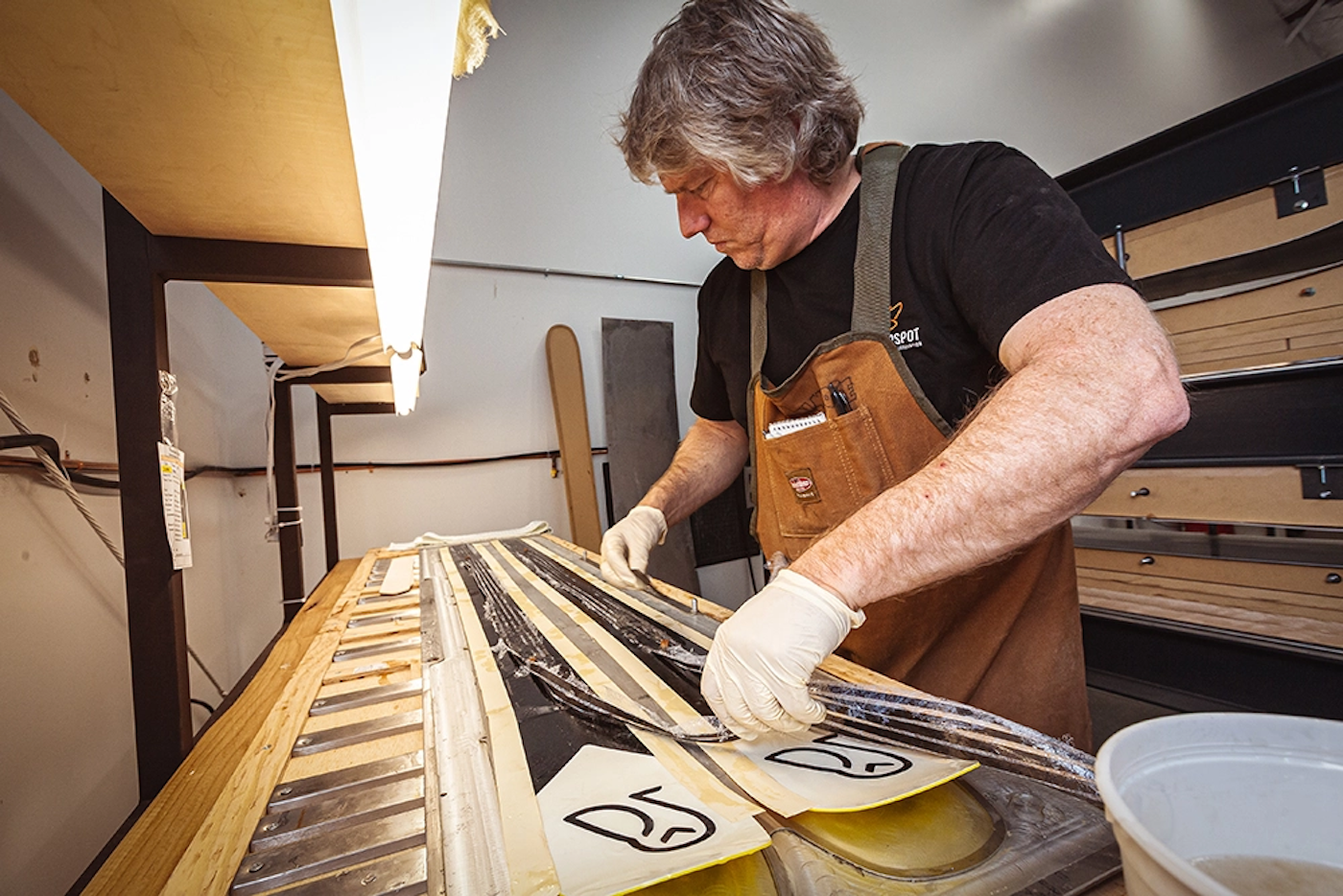
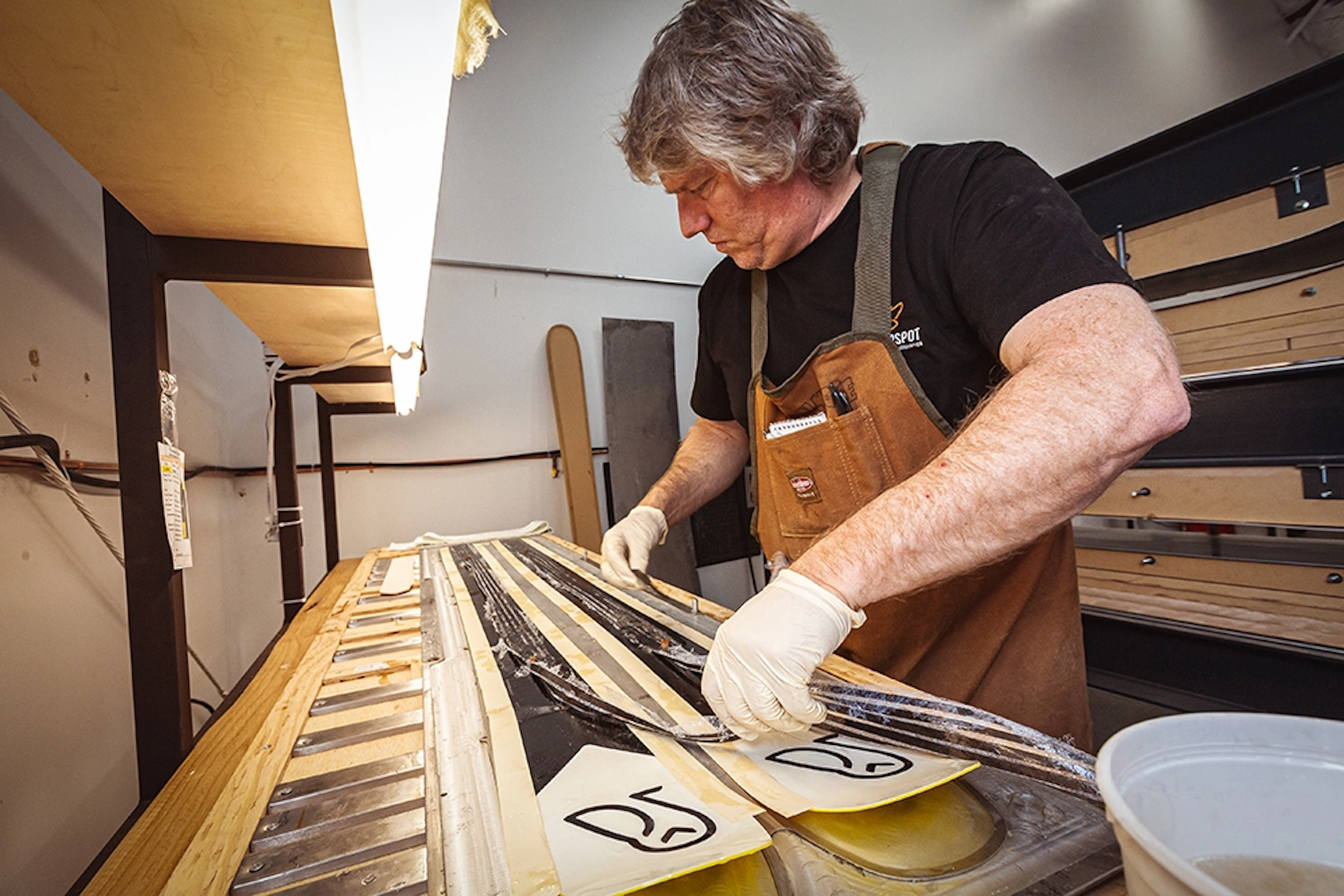
Daniel Malmrose putting together The Intention 110 prototype in Salt Lake City.
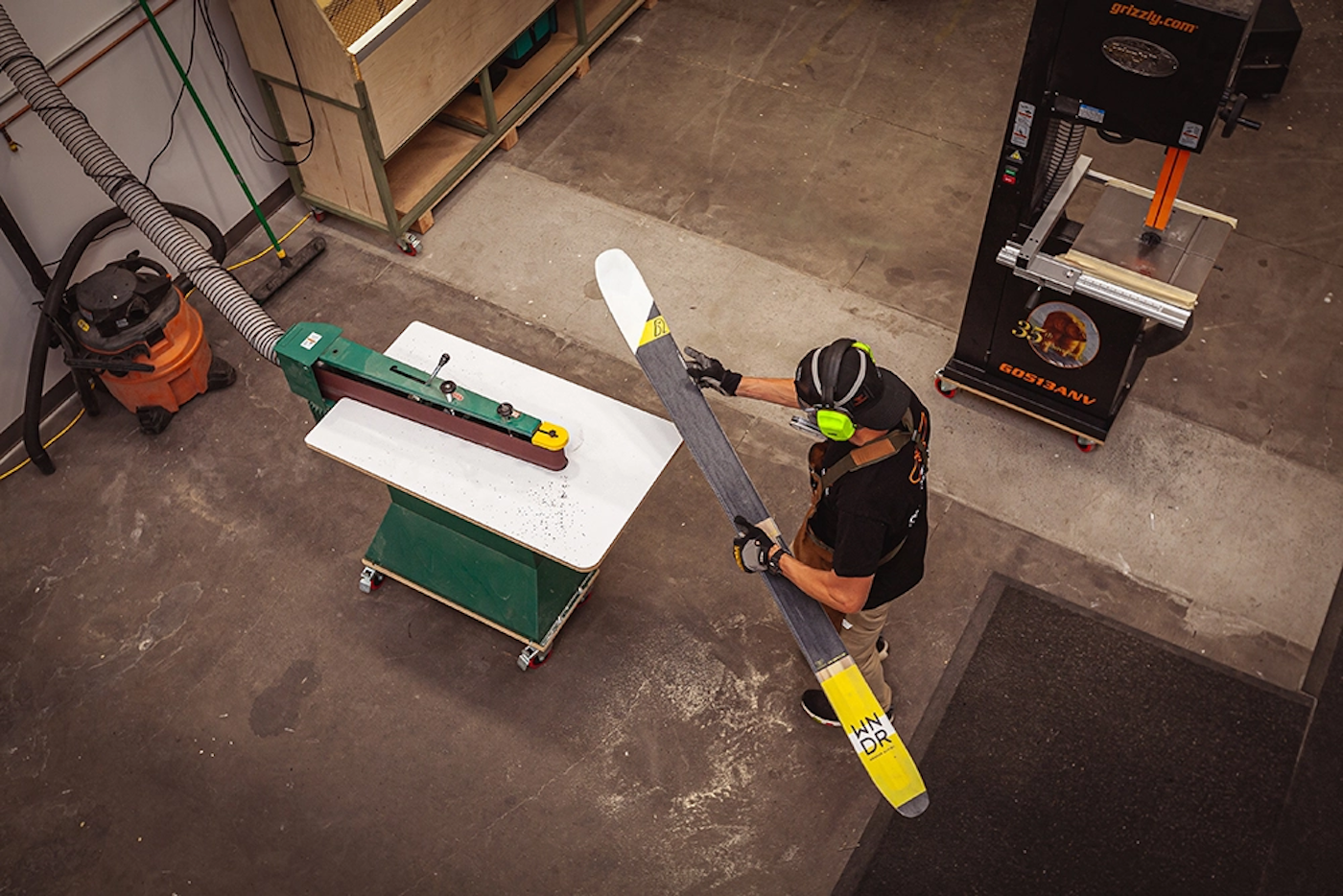
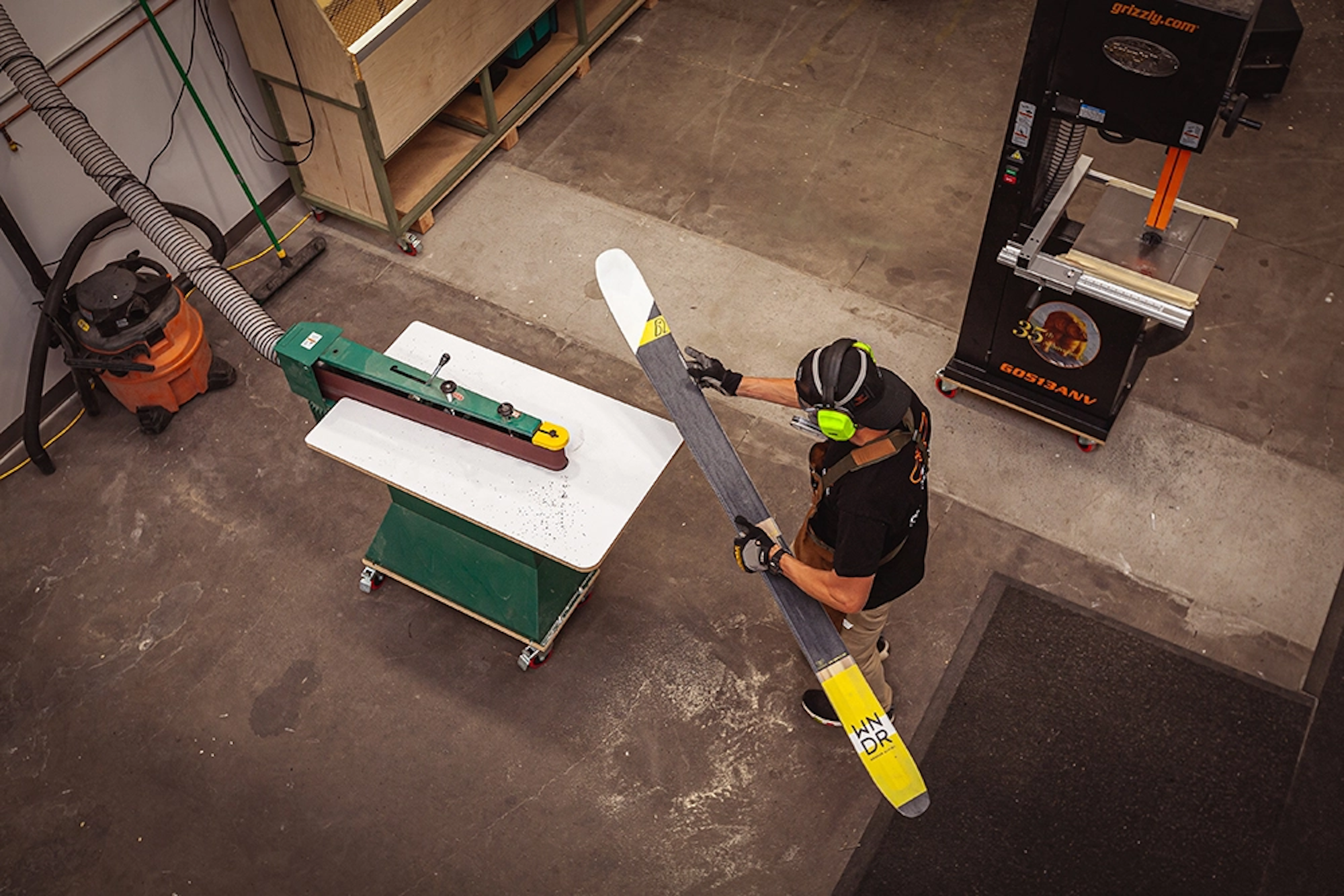
Matt Sterbenz taking the Intention 110 prototype to the side shaper.
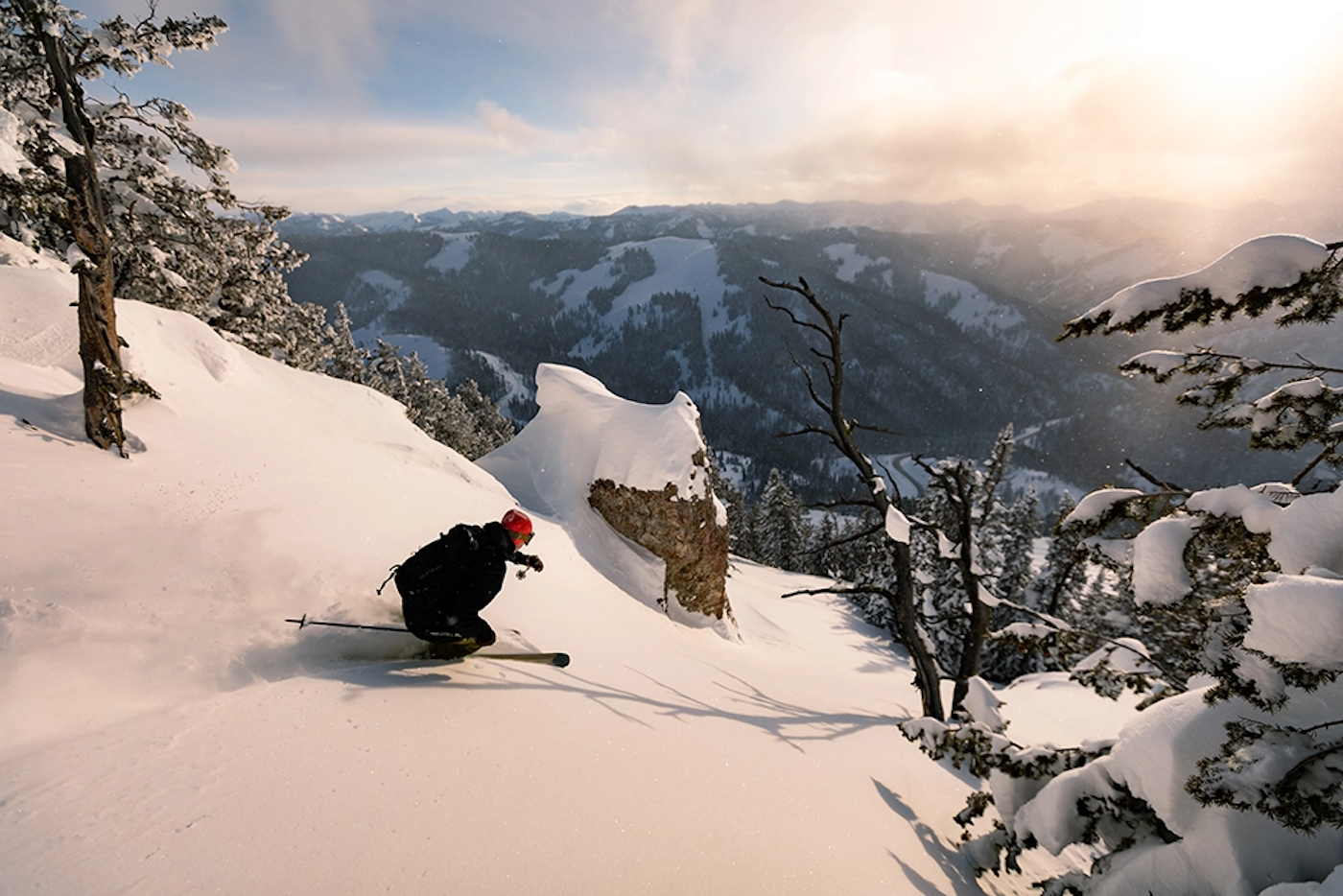
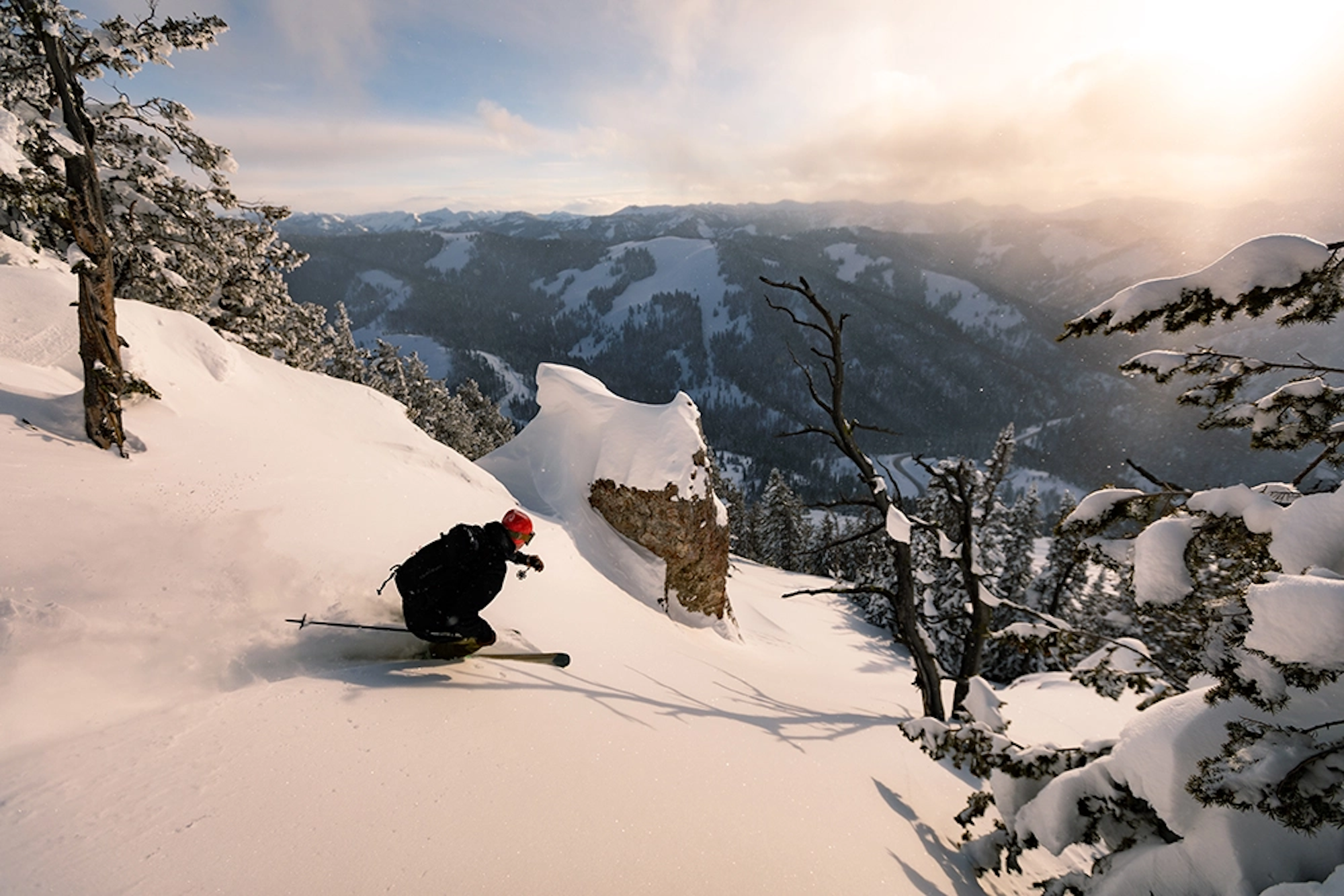
Matt Sterbenz amidst the long testing process for WNDR Alpine.
After skiing that June day, Sterbenz and Malmrose walked me through the Design Lab. It’s a stark contrast to its bare-bones beginnings I visited in January when Sterbenz was assembling the ski press. The research and development facility was just beginning in January 2019, when they began working with a local injection molding company in Utah to convert their Part A and Part B chemicals into a high-density composite. As Sterbenz explains, the process involves taking the micro-algae polyol, which is a base chemical to the oil (comprised of 98 percent algae), and converting it using a Part B chemical to create a high-density composite.
The algae oil—which is the base for the composite that sets the Intention 110 apart—proved to be the impetus in embarking upon the WNDR Alpine brand. It was a new core molecule derived from green chemistry versus a polyurethane derived from petrochemicals (i.e. a huge decrease of carbon footprint within ski production).


Oil that was extracted from unique strains of microalgae can produce a range of new oils, each with their own unique performance benefits. Location: Checkerspot Headquarters, Berkeley, CA | Photo: Josh Berman/Level 1
However, not everyone was convinced outside of their circle. While roaming the halls of the 2019 Outdoor Retailer Snow Show, Sterbenz was holding a jar of the oil as he ran into friends and colleagues—people whom he had a long history of working with from his time at 4FRNT. Accompanied by Dimmler, they had no schedule or appointments. As they started speaking to folks about the algae-derived oil and its potential, people were surprised, yet apprehensive.
“The oil caught people out of left field. I think the most sophisticated conversation I had with anyone at the time was that somebody wanted to smell it. It was as if we were from the future,” remarks Sterbenz. It was a similar experience he and pro skier Eric Hjorleifson had during the early days of 4FRNT when skiing and traveling in Europe—they distinctively stood out from the crowd—skiing on fat skis with tech bindings, in baggy clothes and venturing off-piste. They were viewed as outcasts, as others remained in the reigns of the resort, sporting form-fitting clothes and matching slalom skis.
“[Outdoor Retailer] was kind of a reality [check] for us in two ways,” he says. “One, nobody gets it. And second, we’re probably going to have to do this on our own.” After their experience at the trade show, Sterbenz and Malmrose began producing prototypes, analyzing them from the molecular level up. They re-examined everything, from their composite, wood cores, to resin and fiber studies. They created an absurd amount of data points, all directing them through their prototyping process—not only were they going to create a ski using green technology, but they were focused on making it perform better than current skis on the market. Sterbenz then hit the road for a trip throughout the western United States and Canada, to ski on the skis and have others test them for validation.
It was a testament to their vision, because in reality no other ski brand had access to the kind of level of research Checkerspot was bringing to the table, and now they had industry icons in Sterbenz and Malmrose working to bring life to their green technology, which is seeing constant innovation from a team of molecular biologists and scientists at the Berkeley headquarters.
The algae composite core was incredibly light as I grasped a large block of it in the Design Lab. It’s vertically laminated within the ski core, which also consists of aspen and paulownia woods.
Seeing it after skiing brought me full circle, not only did the skis track smoothly with no deflection but also had snap and power while remaining damp—validation of their approximately 50 pairs of prototypes, all of which will find a home. They were also light, a huge bonus for this sustainable material. Aimed for the backcountry market, The Intention 110 is 110 mm wide underfoot and is being offered in a cambered (1,830 g) and full rocker version (1,900 g), and in four lengths. It is being sold directly to consumers via wndr-alpine.com at $799. The skis will also be delivered in a co-branded Dakine Zipper bag, in efforts to reduce packaging and further promote sustainability.
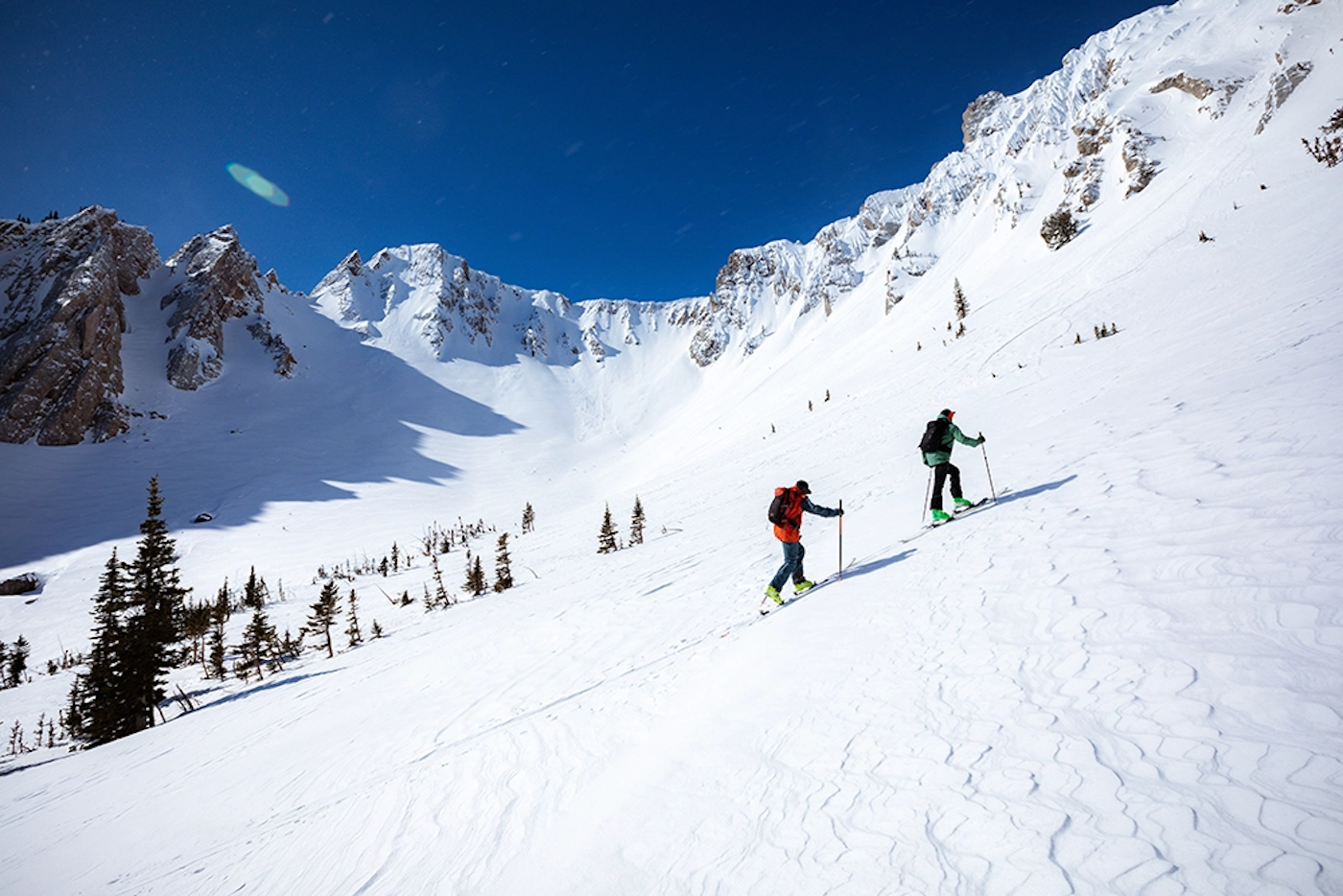
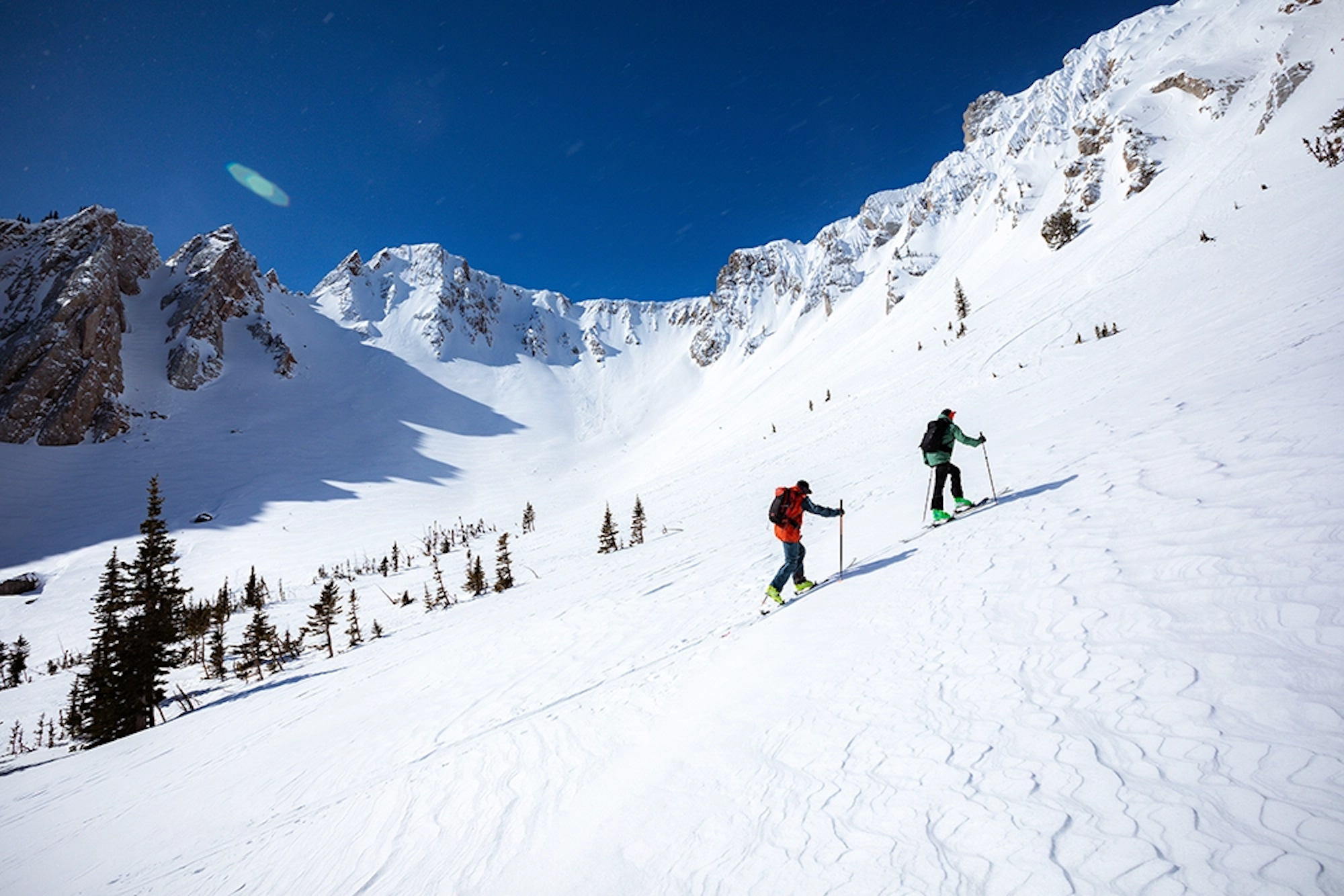
The Intention 110 is a backcountry-specific ski meant to excel on the up and the down. Skiers: Tyler Miller (left) & Matt Sterbenz (right). Location: Bridger Range, MT
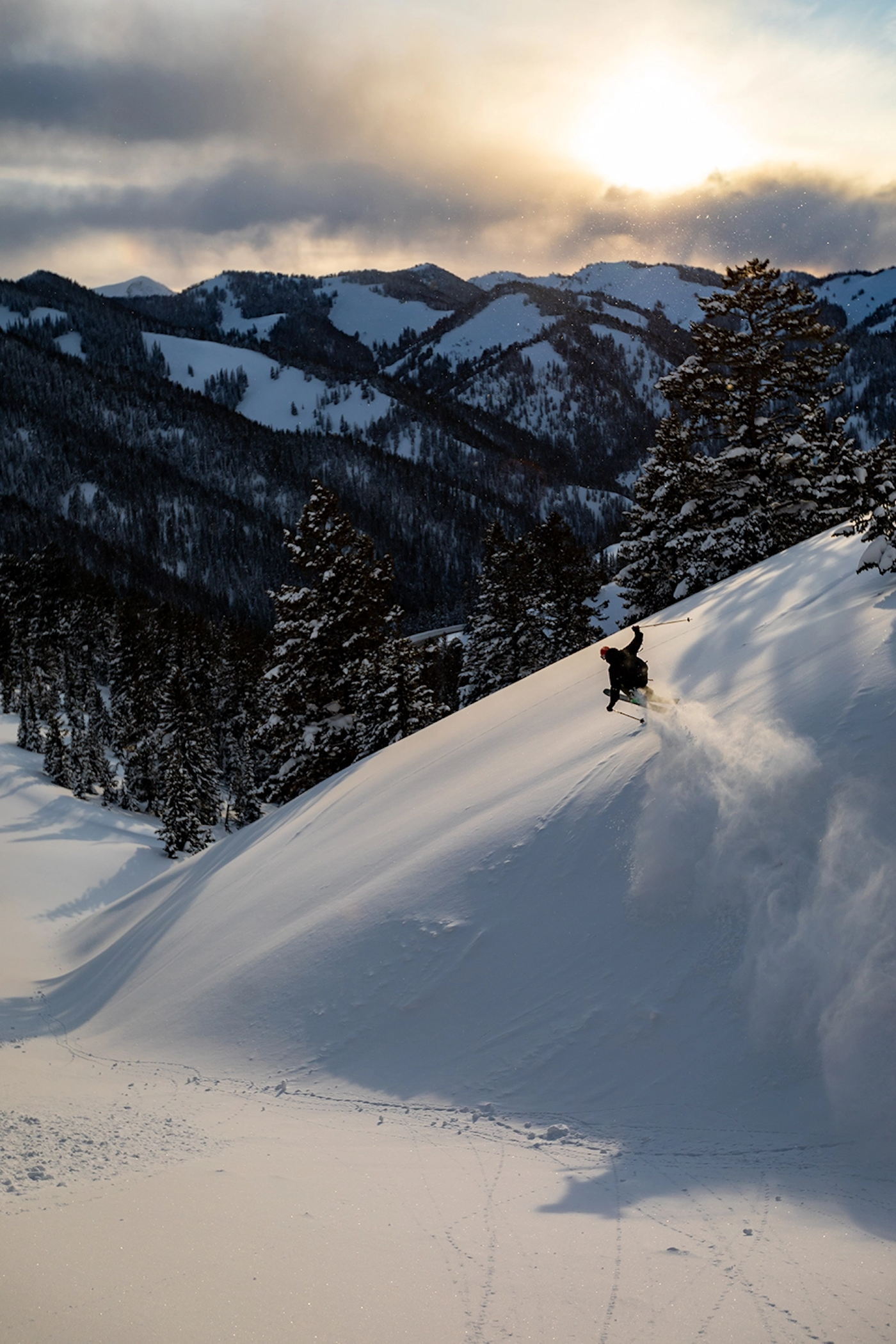
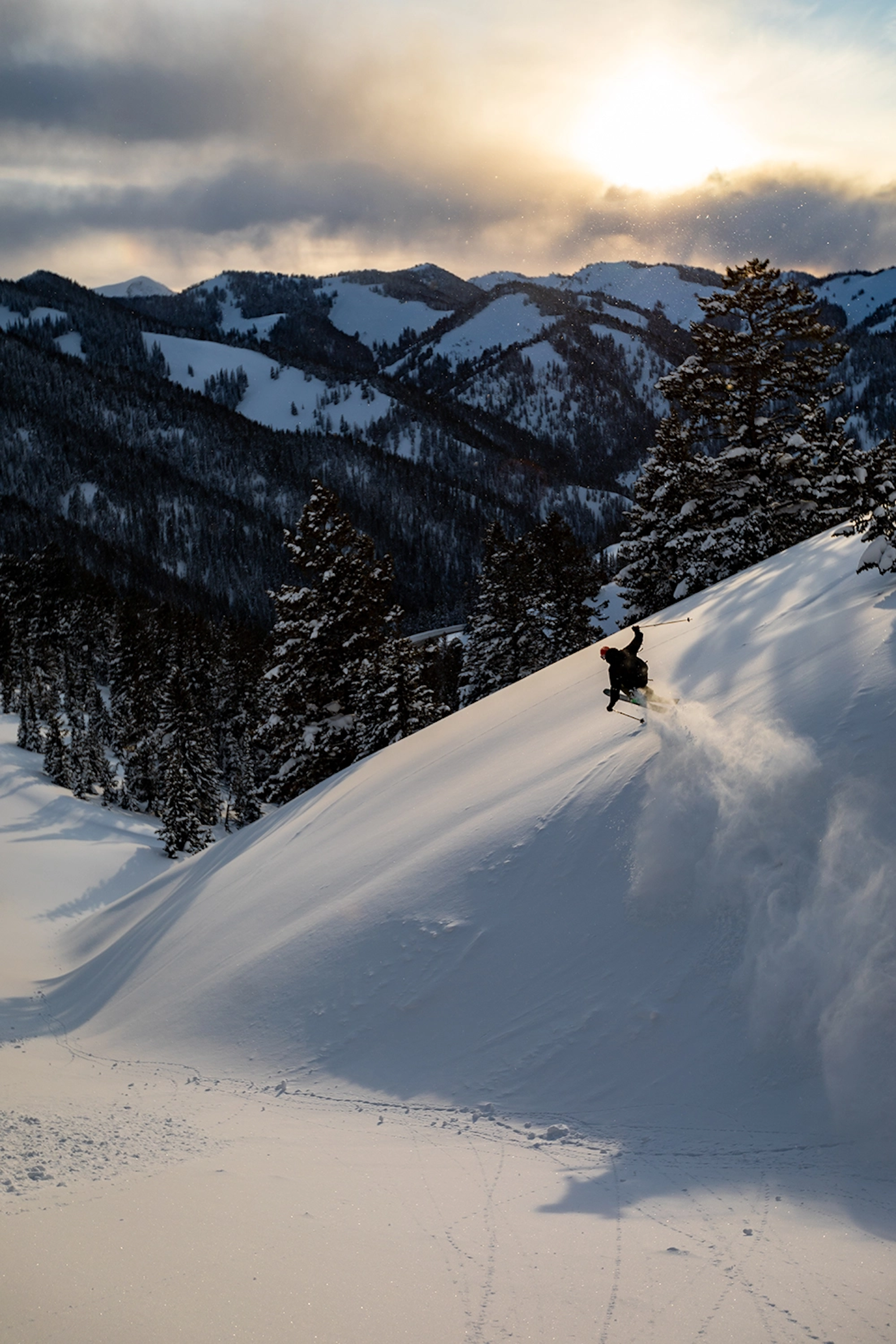
…but especially on the down. Skier: Matt Sterbenz. Location: Teton Pass, WY
The Intention 110 is just the beginning for WNDR Alpine. While different shapes and models are in its future, the company has already begun testing new ways to eliminate other fossil fuel-derived polyurethane products within ski construction, to both improve performance and sustainability. Additionally, the team has ambitious plans to reverse mold skis at the end of their life cycle—currently, there are three to four million pairs of skis produced each year, all of which eventually find their way to a landfill.
“If we can develop a platform that allows us to reverse the molding process of that product and reclaim skis and repurpose the materials that those skis were made out of, [we can] grind those materials up and put them into future iterative materials that are going to go into the next generation of skis. Then we can not only be increasing the overall algae composition of the ski’s construction, but it can also come to market with an increasing amount of post-consumer material.”
For now, and in its initial year, WNDR Alpine plans on building a community around what it believes is going to be “a pivotal role in true ski innovation, potentially leading to a revolutionary change in how we depend on certain materials in the construct of skis and snowboard worldwide.”
As backcountry skiers, the folks at WNDR Alpine know all too well that skis are toxic products from their material composition produced in carbon contributing factories, and there’s little accountability for some of them. But now, this crew is pushing the boundaries of innovation and sustainable design, refusing to accept what has been the norm in ski building and the associated carbon footprint that exists in producing them.
“This ski will be a leading proof of concept for the various different technology applications that we have access to, improving performance characteristics—most importantly—but also re-aligning the consumer perspective that materials derived from nature can offer solutions to some of our planet’s biggest problems.”

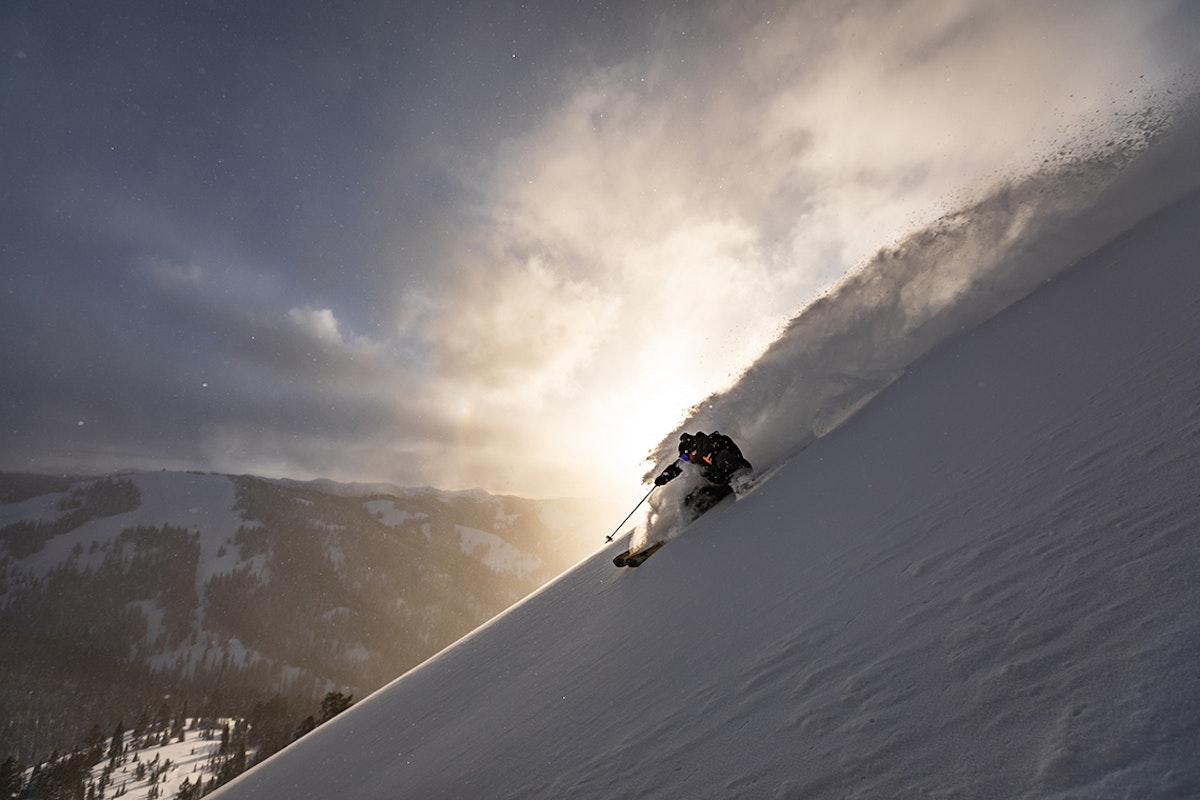


![[GIVEAWAY] Win a Head-to-Toe Ski Setup from IFSA](https://www.datocms-assets.com/163516/1765920344-ifsa.jpg?w=200&h=200&fit=crop)

![[GIVEAWAY] Win a Legendary Ski Trip with Icelantic's Road to the Rocks](https://www.datocms-assets.com/163516/1765233064-r2r26_freeskier_leaderboard1.jpg?auto=format&w=400&h=300&fit=crop&crop=faces,entropy)
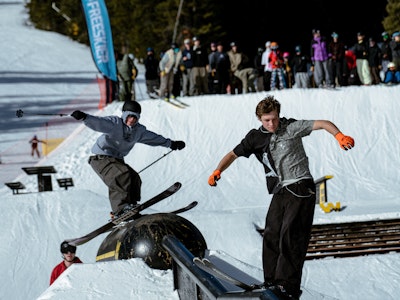




![[GIVEAWAY] Win a Head-to-Toe Ski Setup from IFSA](https://www.datocms-assets.com/163516/1765920344-ifsa.jpg?auto=format&w=400&h=300&fit=crop&crop=faces,entropy)

